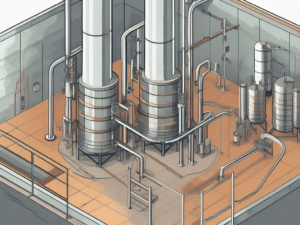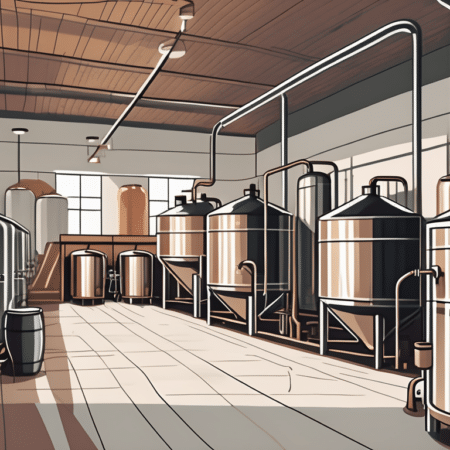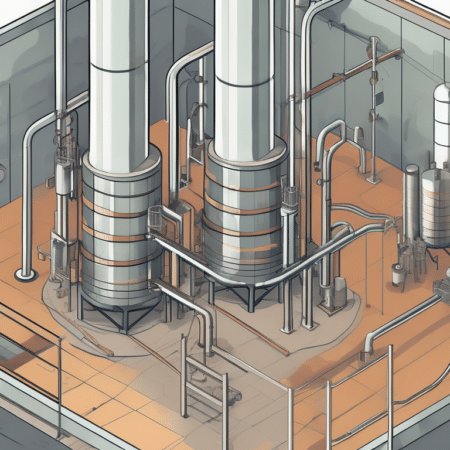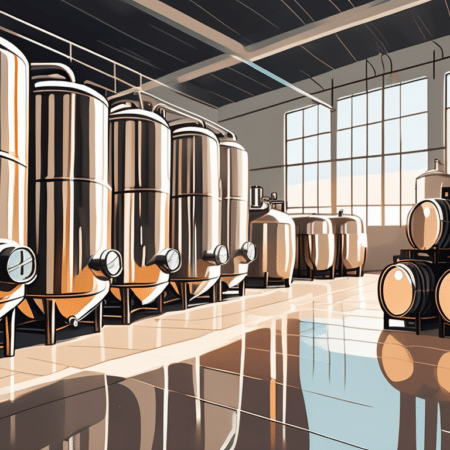In the brewing industry, having a solid foundation is crucial. That’s where brew floors come into play. A well-designed brew floor not only ensures the safety of your staff and equipment but also contributes to the overall quality and efficiency of the brewing process. In this ultimate guide, we will explore everything you need to know about brew floors, from understanding their importance to choosing the right one for your brewery, and from the installation process to maintenance and cleaning tips.
Understanding the Importance of Brew Floors
Before delving into the technical aspects, let’s grasp the significance of brew floors in brewing operations. Brew floors provide a sturdy platform for your equipment, tanks, and barrels, ensuring stability during various processes such as mashing, boiling, fermenting, and packaging. This reduces the risk of accidents and enhances productivity.
But there’s more to brew floors than just being a stable foundation. Let’s explore the additional details that make brew floors an essential component of any brewery.
The Role of Brew Floors in the Brewing Process
Brew floors are not just a static component of your brewery; they play an active role throughout the brewing process. They provide a level and slip-resistant surface that helps prevent spills and accidents. Imagine the chaos that could ensue if a slippery floor caused a brewer to lose their footing while carrying a boiling kettle of wort. The consequences could be disastrous, not only for the brewer but also for the entire batch of beer being brewed.
Additionally, brew floors offer resistance to chemicals, heat, and moisture, which are often encountered during brewing. The brewing process involves the use of various chemicals, such as acids and alkaline solutions, for cleaning and sanitizing equipment. A good brew floor should be able to withstand exposure to these chemicals without deteriorating or becoming damaged. It should also be able to handle the high temperatures generated during boiling and fermentation, as well as the moisture that may accumulate during these processes.
Key Features of a Good Brew Floor
When selecting a brew floor, certain features should be considered to ensure optimal performance and longevity. Firstly, it should have excellent durability and be able to withstand heavy equipment and constant foot traffic. Brewing equipment, such as mash tuns, fermenters, and bright tanks, can be quite heavy, and a weak or unstable floor could lead to equipment failure or accidents. A good brew floor should be able to handle the weight and impact of such equipment without cracking or breaking.
Secondly, a brew floor should be resistant to chemicals commonly used in breweries, such as acids and alkaline solutions. These chemicals are necessary for maintaining a clean and sanitized brewing environment, but they can be corrosive and damaging to certain flooring materials. A chemically resistant brew floor will ensure that your brewery remains safe and hygienic without compromising the integrity of the floor.
Lastly, a good brew floor should have anti-slip properties to ensure a safe working environment. Spills are bound to happen in a busy brewery, and a slippery floor can quickly turn into a hazard. An anti-slip brew floor provides traction, reducing the risk of slips and falls, and creating a safer workspace for brewers and other brewery personnel.
Different Types of Brew Floors
When it comes to brew floors, there are various materials that can be used, each with its own advantages and disadvantages. Let’s take a closer look at three popular options:
Epoxy Resin Floors
Epoxy resin floors are renowned for their superior chemical resistance, making them an ideal choice for breweries. These floors are able to withstand the harsh chemicals commonly used in brewing processes, ensuring a long-lasting and durable surface. In addition to their chemical resistance, epoxy resin floors are also easy to clean and maintain, saving brewers valuable time and effort. Another advantage of these floors is their customization options. With a variety of colors available, brewers can choose a floor that not only meets their functional needs but also adds a touch of aesthetic appeal to their brewery.
Furthermore, epoxy resin floors offer excellent durability, making them capable of withstanding heavy machinery and equipment commonly found in breweries. This durability ensures that the floor will not crack or chip under the weight of these heavy objects, providing a safe and reliable surface for brewery operations.
Polyurethane Floors
Polyurethane floors are another popular choice for breweries, offering great chemical resistance and exceptional durability. Similar to epoxy resin floors, polyurethane floors can withstand the corrosive effects of chemicals commonly used in brewing processes. This resistance ensures that the floor remains intact and unaffected, even when exposed to harsh substances.
One notable advantage of polyurethane floors is their resistance to UV rays. This feature is particularly beneficial for breweries that have areas exposed to sunlight. UV rays can cause discoloration and degradation of certain flooring materials, but polyurethane floors are designed to withstand these effects, ensuring that the floor maintains its appearance and functionality over time.
Additionally, polyurethane floors have a flexible nature, making them suitable for areas where slight movement or vibrations are expected. This flexibility allows the floor to absorb and distribute the impact of these movements, preventing any damage or cracks from occurring.
Concrete and Tiled Floors
While epoxy resin and polyurethane floors offer numerous advantages, concrete and tiled floors still find their place in many breweries today. These traditional options may lack some of the benefits provided by epoxy resin and polyurethane floors, but they have their own unique advantages.
One significant advantage of concrete and tiled floors is their cost-effectiveness. Compared to other flooring options, such as epoxy resin and polyurethane, concrete and tiled floors are typically more affordable. This affordability makes them a practical choice for breweries with budget constraints.
In addition to their cost-effectiveness, concrete and tiled floors are known for their ability to withstand heavy machinery and equipment. Breweries often have large machinery and tanks that can exert a significant amount of weight on the floor. Concrete and tiled floors are designed to handle this weight without cracking or breaking, ensuring a safe and stable surface for brewery operations.
However, it is important to note that regular maintenance and sealing are necessary to keep concrete and tiled floors in prime condition. Without proper maintenance, these floors can become susceptible to stains, cracks, and other forms of damage. Therefore, breweries opting for concrete or tiled floors should allocate resources for regular upkeep to ensure the longevity and functionality of their brew floors.
Choosing the Right Brew Floor for Your Brewery
When selecting the perfect brew floor for your brewery, consider two key factors: assessing your brewery’s needs and comparing different brew floor materials.
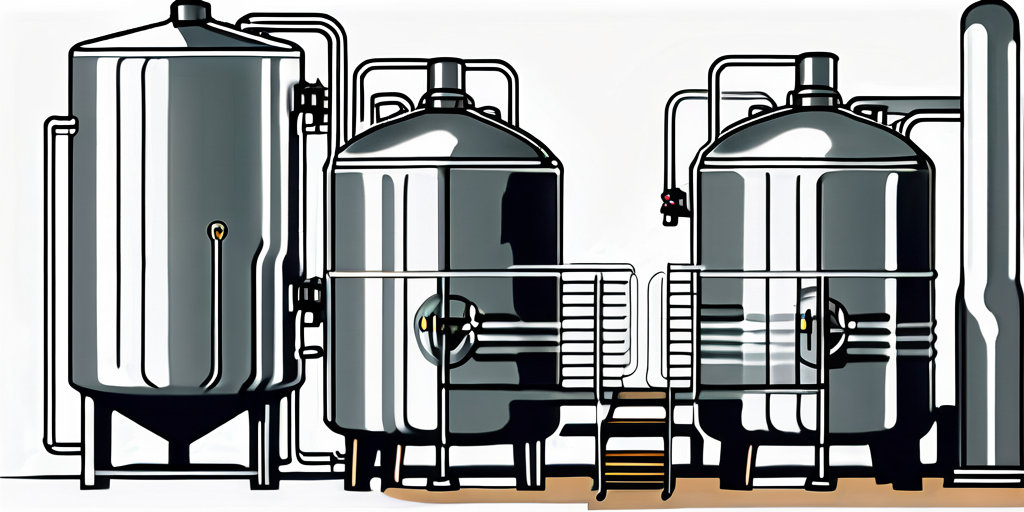
Assessing Your Brewery’s Needs
Before making a decision, carefully evaluate your brewery’s specific requirements. Consider the types of beverages you produce, the size of your operation, the flow of your processes, and the level of foot traffic in different areas. By understanding your unique needs, you can choose a brew floor that aligns perfectly with your requirements.
Comparing Different Brew Floor Materials
Take the time to research and compare various brew floor materials. Consider factors such as durability, chemical resistance, ease of maintenance, and overall cost. By analyzing these aspects, you can make an informed decision that meets both your functional and budgetary needs.
Installation Process of Brew Floors
Installing brew floors requires careful consideration and proper execution to ensure long-lasting results. Here’s a step-by-step installation guide:

Preparing Your Space for Installation
Prior to installation, clear the space and ensure it is clean, dry, and free of any debris. Remove any existing flooring that may hinder the installation process. Assess the surface for any cracks or irregularities and address them before proceeding.
Step-by-Step Installation Guide
1. Apply a primer to the prepared surface to enhance adhesion. 2. Mix and apply the chosen brew floor material according to the manufacturer’s instructions, ensuring even coverage. 3. Allow the floor to cure as specified, taking into account factors such as temperature and humidity. 4. Apply additional layers if necessary, following the recommended time intervals between coats. 5. Once fully cured, inspect the brew floor for any imperfections and make necessary touch-ups.
Maintenance and Cleaning of Brew Floors
Keeping your brew floor clean and well-maintained is essential for maintaining its longevity and functionality. Here are some tips:
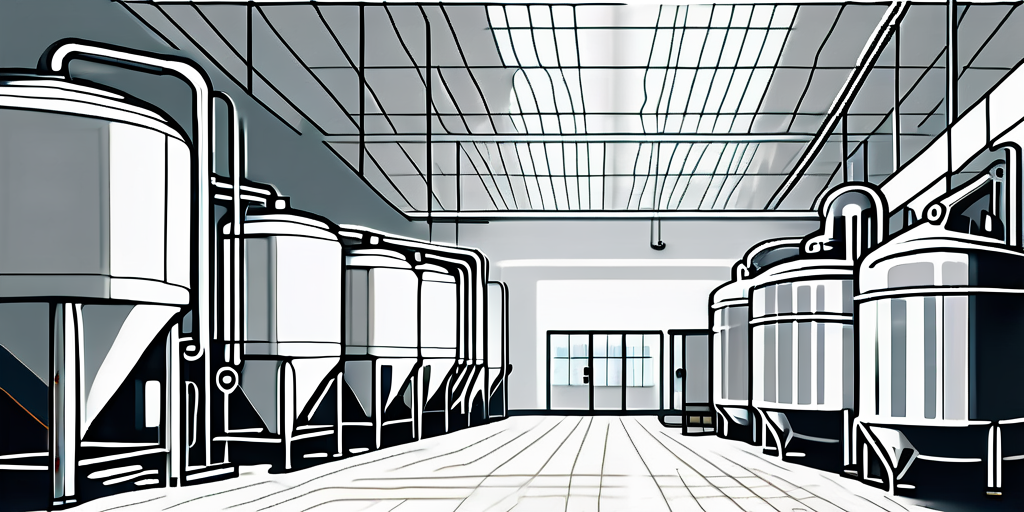
Routine Cleaning Tips
Create a cleaning schedule to regularly remove dirt, spills, and residues from your brew floor. Sweep or vacuum the surface daily to eliminate loose debris. Use mild detergents and warm water for routine cleaning, avoiding harsh chemicals that may damage the floor. Regularly check for stains or spills and promptly clean them to prevent discoloration.
Long-Term Maintenance Strategies
Perform periodic inspections of your brew floor to identify any signs of wear or damage. Address any issues promptly by repairing or replacing damaged sections. Consider applying protective coatings or sealants to enhance the durability and chemical resistance of your brew floor. Additionally, educate your staff about proper handling and maintenance of the brew floor to maximize its lifespan.
By understanding the importance of brew floors, exploring different types, choosing the right one for your brewery, following the correct installation process, and implementing proper maintenance strategies, you can create a sturdy and functional brew floor that enhances the brewing process and ensures a safe working environment.





